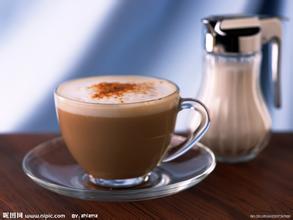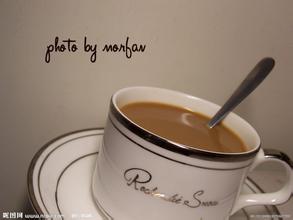Introduction to the time and process of drip steaming of coffee
It's steaming. This step is very important, the main purpose is to remove carbon dioxide from coffee beans and use it to open up the flavor of coffee. Pour the ground beans into the filter paper, gently pat the coffee powder pile with your hand, then pour water from the center of the powder pile and circle it gently. Generally speaking, we recommend twice the amount of coffee powder. If you don't have an electronic scale, you can stop pouring water when you see the coffee liquid dripping from under the filter paper. Generally speaking, moderate coffee powder is steamed for about 30 seconds, if it is medium-shallow coffee beans, it is recommended to extend the steaming time to 45 seconds to one minute. If there is no chronograph, it can be regarded as steaming when the powder pile begins to collapse from the middle.
Advantages: the mixing method can amplify the advantages of the coffee beans, especially enhance the taste of the coffee beans, and will not be too thin.
Disadvantages: although its flavor is more obvious, its return is weakened a lot. And this method has high requirements for the quality of coffee beans, if you use poor coffee beans, it will only infinitely magnify its bad flavor. In addition, because the grinding degree of coffee powder required by this method is very fine, coupled with sufficient stirring, it is easy to over-extract improperly.
Brewing mode:
First inject 50g hot water (because too little water will make it impossible to stir, so 50g hot water is injected here for steaming time), stir so that the water is in uniform contact with coffee powder, then steam moderately roasted coffee powder to 30s and then water injection is completed during 2min; deep baking and steaming to 15s and then water injection is completed during 1min30s
1. Before steaming with water, make sure the coffee powder is as horizontal as possible in the filter screen or filter paper.
two。 When steaming, the force of injecting water is not too strong, gently.
3. The amount of water used in steaming should be 10% of the total water.
4. In the process of steaming, there is as little extract as possible; when there is too much extract in the kettle, the amount of water injected should be reduced, or attention should be paid to the degree of grinding.
5. The time of steaming is about 30 seconds.

Important Notice :
前街咖啡 FrontStreet Coffee has moved to new addredd:
FrontStreet Coffee Address: 315,Donghua East Road,GuangZhou
Tel:020 38364473
- Prev

Is the goddess in Starbucks "coffee goddess"?
When you sit in any Starbucks coffee shop in Beijing and taste your first cup or the thousandth cup of Starbucks coffee, you will see a woman smiling at you in her Starbucks coffee mug. She looks innocent but charming. Who is she? You can't help thinking, is it the coffee princess from Colombia or the mermaid from the Mediterranean? No.
- Next

Description of the Flavor of Robasta Bean Coffee Powder introduction to the varieties of Coffee trees
The Congo, which originated in Africa, has a yield of 20% 30% of the world's output, which is suitable for lowlands below 500 meters. It has strong adaptability to the outside world, can resist bad climate, resist diseases and insect pests, and can be allowed to grow in the wild. It is a kind of coffee tree that is easy to cultivate. It is generally used to make instant coffee with strong adaptability to the outside world. It can resist bad weather and resist diseases and insect pests.
Related
- Beginners will see the "Coffee pull flower" guide!
- What is the difference between ice blog purified milk and ordinary milk coffee?
- Why is the Philippines the largest producer of crops in Liberia?
- For coffee extraction, should the fine powder be retained?
- How does extracted espresso fill pressed powder? How much strength does it take to press the powder?
- How to make jasmine cold extract coffee? Is the jasmine + latte good?
- Will this little toy really make the coffee taste better? How does Lily Drip affect coffee extraction?
- Will the action of slapping the filter cup also affect coffee extraction?
- What's the difference between powder-to-water ratio and powder-to-liquid ratio?
- What is the Ethiopian local species? What does it have to do with Heirloom native species?

